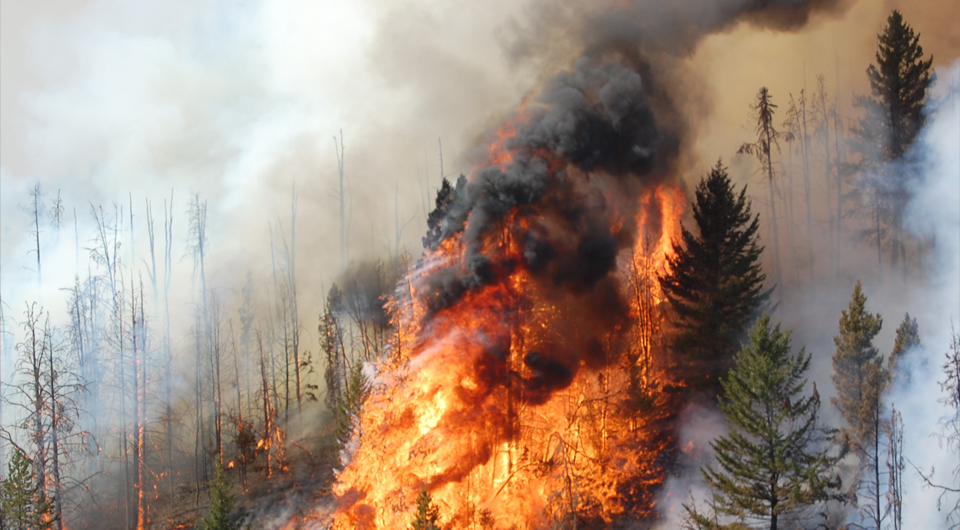After last year’s historic flood and fire disasters, the folks in the Canadian province of British Columbia are hoping for more resilience in the face of wildfires, flooding and extreme heat as a result of actions included in their new Climate Preparedness and Adaptation Strategy.
The strategy includes actions across ministries supported by $513 million of investment to ensure British Columbia is prepared for climate impacts in the near term, while setting the foundation for future action.
“Restoring the health of Kus-kus-sum watershed on K’omoks territory is critically important to live in balance with nature and prepare for the impacts of climate change, like extreme flooding and drought,” said Hegus Nicole Rempel of the K’omoks First Nation.
“K’omoks First Nation is working with local partners to turn a former sawmill site into critical habitat for salmon, herring, migratory birds and other species. By removing cement, regrading natural slope and adding native plants to the area, we’re healing vital ecosystems and building greater resiliency to climate change,” he continued.
The strategy outlines a range of government actions to help people and communities prepare including:
- an expanded role for the BC Wildfire Service to provide enhanced wildfire prevention and preparedness;
- the development of a comprehensive provincial flood strategy and flood resilience plan to ensure communities are better protected from extreme flooding;
- an extreme heat preparedness plan to help people and communities stay safe during heat waves and extreme heat emergencies; and
- investments in nature-based solutions that will reduce the impacts of flooding and droughts by restoring healthy watersheds.
“Last year’s extreme weather left no doubt that British Columbia is directly experiencing impacts of the climate crisis,” said George Heyman, Minister of Environment and Climate Change Strategy.
“We’re making record investments to recover from last year’s extreme floods and fires and adapt to future climate changes, as well as working to cut climate pollution through our CleanBC plan. We’re committed for the long-term. This new strategy takes targeted action now to support food security and resilient local agriculture, create better floodplain risk mapping to improve how we plan our communities, support more cultural and prescribed burning in partnership with Indigenous Peoples, and build more resilient highways and infrastructure so they can withstand future climate impacts,” he added.
The strategy also includes investments for First Nations and local governments to increase wildfire protection through community-led FireSmart activities.
Last summer, the town of Logan Lake successfully fought back the threat of wildfire at its municipal borders, thanks to the work of local firefighters and years of implementing FireSmart practices.
“Climate change has already had significant impacts on communities like Logan Lake through increased wildfires. As our efforts have shown, investing in FireSmart and preparing for wildfires ahead of time is extremely valuable and effective at reducing impacts to communities,” said Robin Smith, the mayor of Logan Lake.
“The new provincial adaptation strategy includes increased supports through FireSmart to help more local governments reduce the risks of wildfires and protect the places we call home,” she added.
The Province developed the strategy based on a wide range of input, including significant feedback through two working groups and multiple engagements with Indigenous Peoples and organizations. Additional input came from the general public, local governments, academics, businesses, non-profits, youth and others.
Tamara Vrooman, President and CEO, Vancouver Airport Authority and member of the Climate Solutions Council says, “There is no greater challenge or opportunity faced by the global community than our response to climate change. YVR is making the investments now to be a net-zero airport by 2030, and supporting the decarbonization of B.C.’s aviation sector. While the transition to lower emissions is under way, we must make the kind of investments that will protect communities and families, create the right kinds of economic opportunities and strengthen partnerships so that knowledge, action and accountability move us all forward. This plan sets out a series of government actions to create that positive future and lasting change.”
The Climate Preparedness and Adaptation Strategy is part of the CleanBC Roadmap to 2030.
Aaron Sutherland, vice-president of the Insurance Bureau of Canada said “British Columbians have seen first-hand the devastating impact that our changing climate can have, be it severe storms, wildfires, or floods. With the frequency and intensity of extreme weather events on the rise, it’s clear much more must be done to build our resilience and adapt to the risks we face. We commend the B.C. government on the release of its Climate Preparedness and Adaptation Strategy, and for demonstrating continued climate leadership at a time when it’s needed most.”
The roadmap is the Province’s plan to expand and accelerate climate action by building on BC’s natural advantages – abundant and clean electricity, innovative technology and a highly skilled workforce. It hopes to set a path for increased collaboration to build a British Columbia that works for everyone.
Heidi Yang, CEO of the Engineers and Geoscientists BC said “The Climate Preparedness and Adaptation Strategy represents an important step forward in both addressing the current impacts of extreme weather events on B.C.’s communities and infrastructure, and preparing for future impacts. Effective assessment and management of climate risk through collaboration and the integration of the latest climate data into decision-making align with the climate adaptation goals of Engineers and Geoscientists BC’s Climate Change Action Plan, and will advance our shared goal of creating a stronger, more resilient BC.”
Photo courtesy of the Government of British Columbia.

